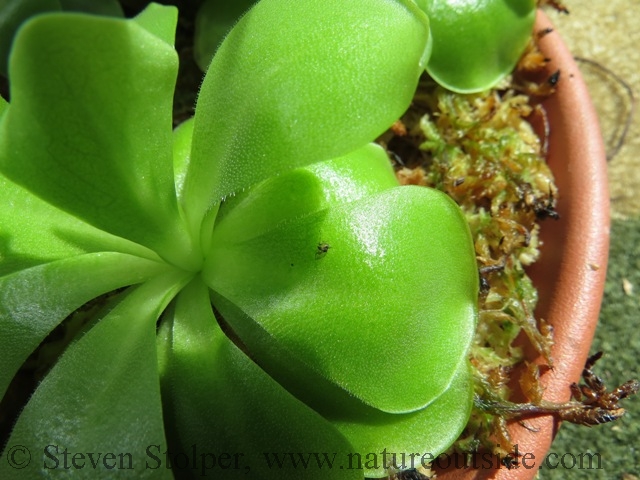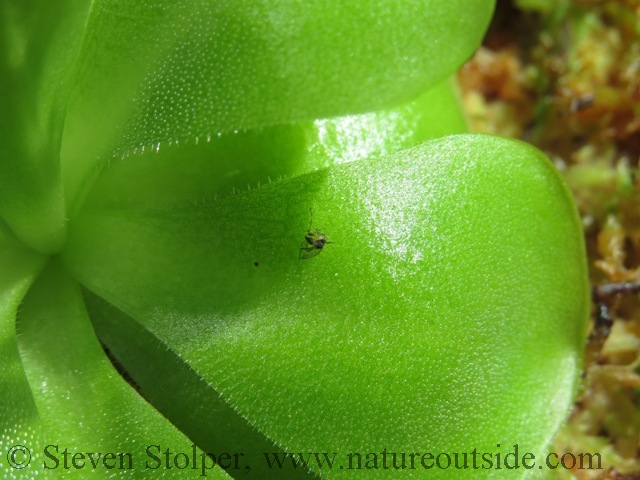
I never seem to have enough time to get out and explore. So I try to maintain a stock of 10-minute indoor bushcraft-related projects I can easily do around the home. Whenever I have time, there is something simple and fun to do or something I can look at. It is not actual dirt time, but I’ll take what I can get!
For readers living in cooler climes, maybe some of these indoor projects might interest you. I will occasionally make some “Buschraft at Home“ posts to describe them. I encourage you to leave comments describing your short projects. Hopefully, we will put together a library of cool ideas to try whenever we have a few minutes around the house. I am always on the look-out for new ideas.
Penguicula Weser
If you grow plants in your home, you are a gardener. If you grow plants that do household chores, you are a bushcrafter! OK, maybe not, but it sounds good… 🙂
I keep several Penguicula Weser plants in my home. These are commonly called “butterworts”. The plants grow in wet and swampy areas with nutrient poor, alkaline soils. Like other plants in these environments they “supplement their income” by catching insects. They are carnivorous.
I use the Penguiculas to catch insects that wander into the house. I have heard that in Victorian times they were used for insect control in greenhouses. The leaves are coated with a sticky secretion. Insects land on the “wet looking” leaves and are caught and digested.
My plants produce beautiful iridescent pink-violet flowers once each year. Even without the flowers, the basal rosettes are pretty to look at.

Penguicula Weser Plants

Penguicula Weser flower
The plants are easy to care for. The roots are shallow so I can keep them in a cheap plastic saucer that is normally used underneath pots for houseplants. They require constant moisture or high humidity. I cannot provide the humidity. But the moisture is easy. I fill the saucer with sphagnum moss. The moss is sold in most nurseries that sell supplies for growing orchids. As long as I wet the moss weekly, the plants are happy. Keeping them in partial sun, or even shade, seems to work fine.
After they flower, they usually reproduce by growing identical plants adjacent to them. You will have to figure out what to do with all the babies… 🙂
Here is a plant on the job.

Penguicula Weser catches mosquito

A close look at the Penguicula Weser leaf (with mosquito)
They take about five minutes a week to care for (water). I like using the plants instead of chemicals or traps. It strikes me as kind of… bushcrafty. 🙂
Share your thoughts
What plants do you keep around the home? Do you have any “working” plants that provide food, material, or do household chores?
Bonus question: Why do you think the flower is held so high above the rest of the plant?
Related Articles on NatureOutside
Acorn Woodpecker – This Bird is Nuts! (Video)
Mountain Kingsnake – Beauty and Danger!
For fun facts and useful tips, join the free Bushcraft Newsletter.



Leave a Comment